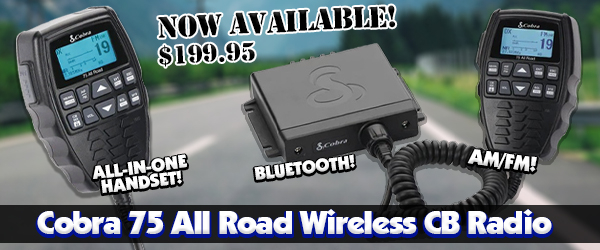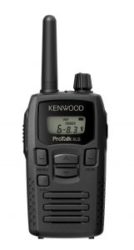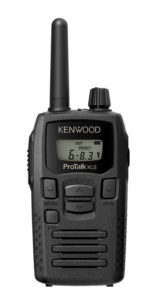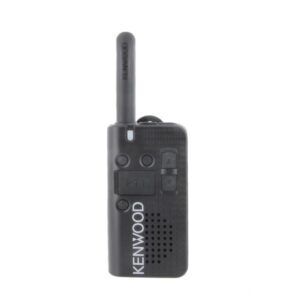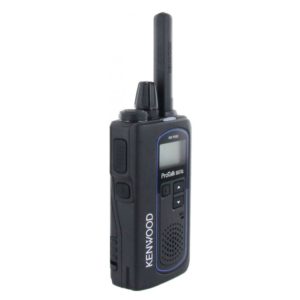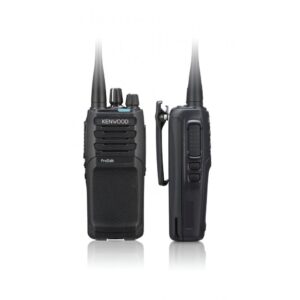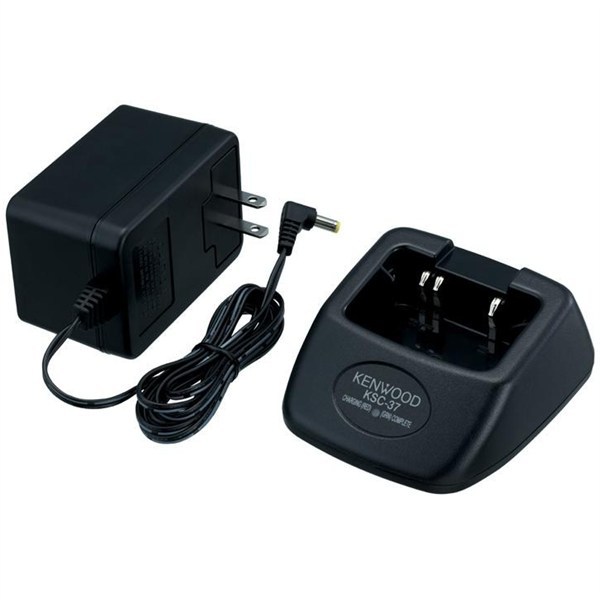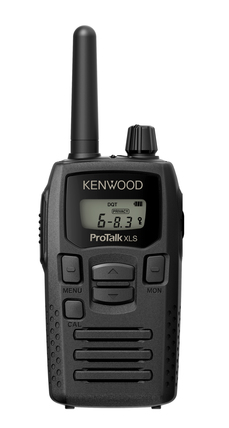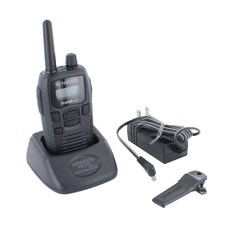 The Kenwood TK-3230DX was once one of the most popular Kenwood business radios around. Then in April 2021, the manufacturer retired this iconic handheld, leaving business customers with the PKT-23 as the only option for a Kenwood radio of its relative size and portability. Now there's a new portable handheld to fill the void, and it has a familiar face. It's the Kenwood ProTalk PKT-300!
The Kenwood TK-3230DX was once one of the most popular Kenwood business radios around. Then in April 2021, the manufacturer retired this iconic handheld, leaving business customers with the PKT-23 as the only option for a Kenwood radio of its relative size and portability. Now there's a new portable handheld to fill the void, and it has a familiar face. It's the Kenwood ProTalk PKT-300!
If you think you've seen this radio before, you're not alone, and you would be correct. While it isn't exactly a TK-3230 or a TK-3030DX, The PKT-300 seems to come pretty darn close. It may be even better.
At 1.97 x 3.86 x 1.06 inches, the PKT-300 is actually smaller than the models in the TK-3230 series. It's also considerably lighter, coming in at only 4.87 ounces compared to the 5.5 ounce weight of those other radios. The antenna seems shorter too.
The PKT-300 also has the same large, 4-digit 7-segment display found on the older models. The display features the same basic icons, including the 3-level battery icon that indicates the current battery level.
Under the hood, it's a slightly different story, and it's a good one. The old 3230DX had a maximum output of 1.5 watts, but the PKT-300 puts out a full 2 watts of transmit power, according to Kenwood. While an extra half watt alone doesn't necessarily mean that much in terms of range, it certainly doesn't hurt.
One interesting feature to note is the number of channels it supports. As with the TK-3230 series, the PKT-300 has 6 pre-set channels. These channels can be modified by the user use any of the 99 pre-stored business frequencies built into the radio. What makes this model different is that, according to Kenwood, the user can upgrade the PKT-300 with 10 additional channels for a total of 16 channels. At the time this article was written, there was no user manual available and no details from Kenwood about how this upgrade would be accomplished, but apparently it can be done.
As for the rest of the feature set, it's pretty much the standard across all the models, and this one is no different.
For the most part, it would seem that the PKT-300 is indeed a new iteration of the classic TK-3230 series. Yet there is one big difference, and that is with the included accessories. the old 3230 and DX 2000mAh battery is not compatible with this radio. Neither are either of the old desktop chargers for those models. Instead the PKT-300 uses the same 2200mAh battery and rapid charger as the now discontinued NX-P500 digital radio.
But before you go dragging out your old NX-P500 single pin audio accessories, here's a twist. They won't work with this model. Instead, the PKT-300 uses the standard Kenwood 2-pin K1 connector, so the old TK-3230 series earpieces, headsets and speaker mics will work with the new PKT-300.
The Kenwood ProTalk® PKT-300 is here and available now at Buy Two Way Radios. Price: $175.00
PKT-300/TK-3230DX Comparison Chart
| Kenwood ProTalk® PKT-300/TK-3230DX Comparison | ||
|---|---|---|
| Item | PKT-300 | TK-3230DX |
| Business Band | UHF | UHF |
| Weight (ounces/grams) | 4.87/138 | 5.5/155 |
| Transmit Power | 2W | 1.5W |
| Preset Channels | 6/16* | 6 |
| Frequency Range | 450-470 MHz | 450-470 MHz |
| Frequencies | 99 | 99 |
| Privacy Codes | 39 QT/83 DQT | 39 QT/168 DQT |
| FleetSync® | ✔ | ✔ |
| Power On Tone | ✔ | ✔ |
| Channel Scan | ✔ | ✔ |
| VOX | ✔ | ✔ |
| Privacy Talk | ✔ | ✔ |
| Compander | ✔ | ✔ |
| Key Lock/Super Lock | ✔ | ✔ |
| 10-Call Alert Tone | ✔ | ✔ |
| Assign Privacy Code to Channel | ✔ | |
| Busy Channel Lockout | ✔ | ✔ |
| Battery Saver | ✔ | ✔ |
| Backlit LCD Display | ✔ | ✔ |
| Keystroke Tone Signal | ✔ | ✔ |
| IP Rating | IP52 | IP52 |
| Mil-STD | MIL 810C, D, E, F, G, H | MIL 810C, D, E, F, G |
| Selective Calling | ✔ | ✔ |
| 2-pin Audio Connector (K1) | ✔ | ✔ |
| Lithium-ion Battery | KNB-81L 2200 mAh | KNB-46L 2000 mAh |
| Battery Power | Up to 18 hours | Up to 18 hours |
| Drop-in Charger | KSC-50K | KSC-37S |
| Dimensions (WxHxD) | 1.97 x 3.86 x 1.06 in (50 x 98 x 27 mm) | 2.07 x 4.07 x 1.17 in (52 x 103.5 x 29.6 mm) |
| Weight (ounces/grams) | 4.87/138 | 5.5/155 |
*Upgradeable to 16 channels.



